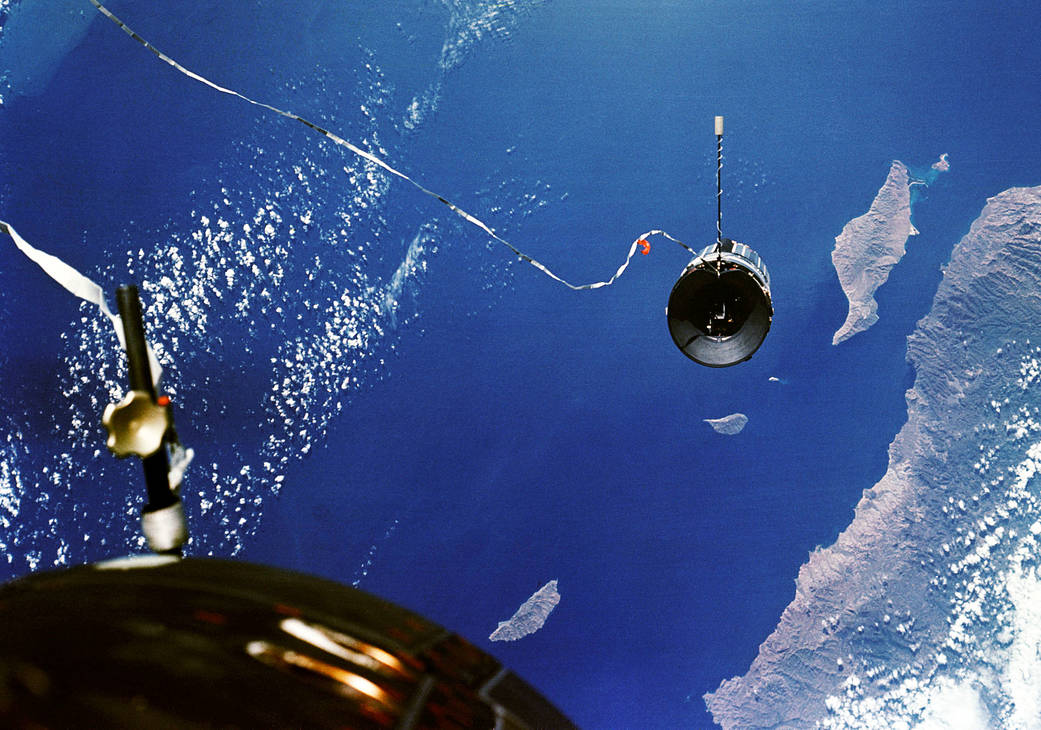
On Sept. 14, 1966, the Gemini XI spacecraft is tethered to an Agena target vehicle. Gemini XI command pilot Charles “Pete” Conrad and pilot Dick Gordon are maneuvering their craft to keep the tether taut between the two. By firing their side thrusters to slowly rotate the combined spacecraft, they were able to use centrifugal force to generate about 0.00015 g of artificial gravity.
Gemini XI separated from the Agena with their spacecraft pointed nose-down toward the Earth. Conrad and Gordon maneuvered their craft to keep the tether taut between both. By firing their side thrusters to slowly rotate the combined spacecraft, they were able to use centrifugal force to generate about 0.00015 g. “There is an artificial gravity field,” Gordon said. “It makes the camera move back very rapidly.” The tether was released following two orbits of the artificial gravity experiment, allowing Gemini and Agena to go their separate ways.
This demonstration of “passive attitude stabilization” of the two spacecraft connected by a tether was only one of many tasks in the flight plan for the demanding three-day mission. In addition, the crew demonstrated the link-up with an Agena and used its engine to boost Gemini XI to a record altitude and performed two spacewalks by Gordon.
Image Credit: NASA



























